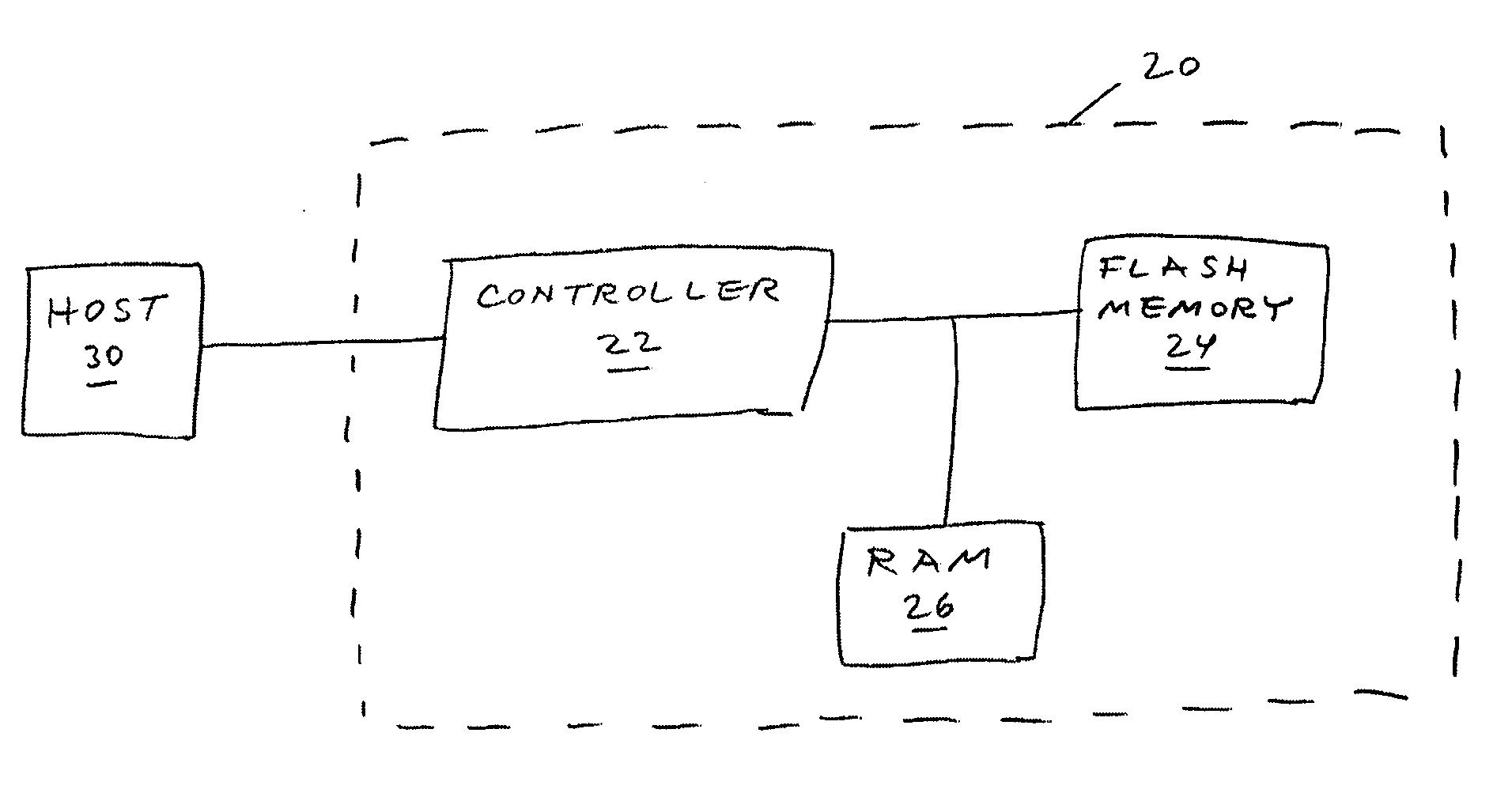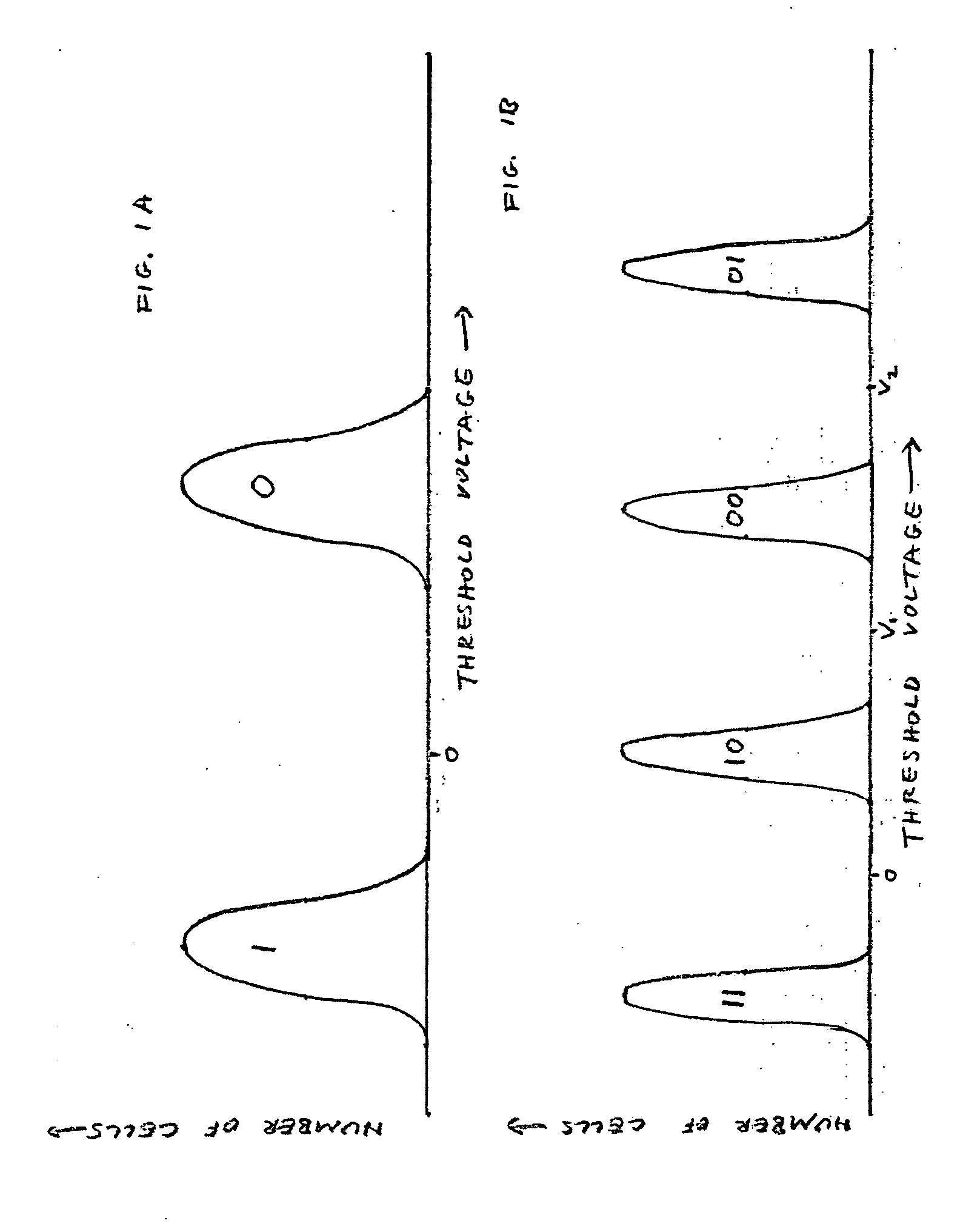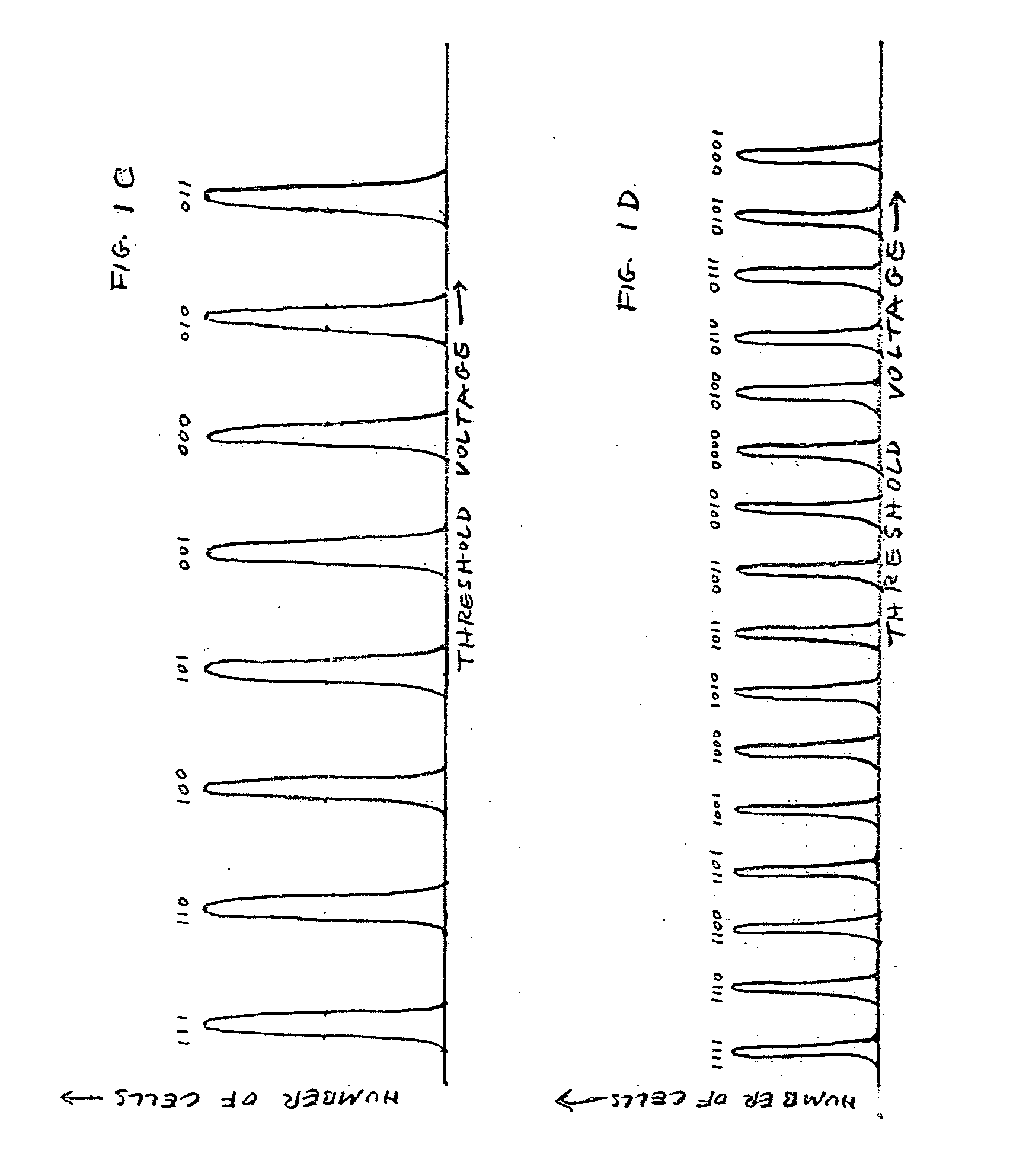Method of error correction in a multi-bit-per-cell flash memory
a multi-bit per-cell, flash memory technology, applied in the direction of information storage, instruments, electric digital data processing, etc., can solve the problems of reducing performance, mbc flash is less reliable than sbc, and the drawbacks of using mbc flash
- Summary
- Abstract
- Description
- Claims
- Application Information
AI Technical Summary
Benefits of technology
Problems solved by technology
Method used
Image
Examples
Embodiment Construction
[0046]The principles and operation of a flash memory decoder according to the present invention may be better understood with reference to the drawings and the accompanying description.
[0047]The present invention uses iterative decoders in the ECC employed in flash memory storage systems that use MBC flash memory devices. The method of the present invention operates as follows:[0048]a. User data are provided by an external host computer to a flash memory storage system of the present invention in order to be stored for later recall.[0049]b. The encoder part of an ECC module of the storage system encodes the user data into a codeword that is a representation of the user data plus some extra information that allows overcoming errors in the data should such errors occur. Typically the stored codeword includes the original user data bits plus some parity bits that are computed based on the user data bits. The encoding may be done using any ECC algorithm known in the art, as long as ther...
PUM
 Login to View More
Login to View More Abstract
Description
Claims
Application Information
 Login to View More
Login to View More - R&D
- Intellectual Property
- Life Sciences
- Materials
- Tech Scout
- Unparalleled Data Quality
- Higher Quality Content
- 60% Fewer Hallucinations
Browse by: Latest US Patents, China's latest patents, Technical Efficacy Thesaurus, Application Domain, Technology Topic, Popular Technical Reports.
© 2025 PatSnap. All rights reserved.Legal|Privacy policy|Modern Slavery Act Transparency Statement|Sitemap|About US| Contact US: help@patsnap.com



